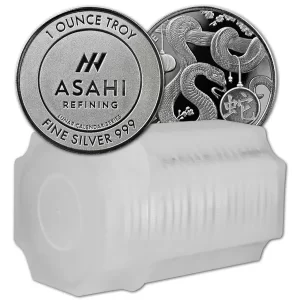Historically, silver has been regarded as a precious metal. Many bullion coins contain silver metal, sometimes in addition to gold. Beginning in 3000 BC, a focused effort was made to mine silver. The first complex processing techniques were developed by the ancient Chaldeans (present-day Turkey) about 2500 BC to extract silver from lead-silver ores. The first silver coins were produced in the eastern Mediterranean in 550 BC. During the Han Dynasty, which lasted from 206 BC to 220 AD, silver coins were part of the country’s legal tender, although they were only used by the royal family. Emperor Genmyo issued the first silver coins in Japan in the year 708. Due to low production levels, it was quickly dropped in favour of copper.
Early Days
Around 750–1200, several significant silver mine discoveries were made in Central Europe, particularly in the well-known German districts of Schemnitz, Rammelsburg, Goslar, and Saxony. Columbus’s discovery of the New World in 1492 was a critical turning point that prompted the establishment of important mines in Mexico, Bolivia, and Peru, which were to produce and trade more than 85% of the world’s silver from 1500 to 1800. Potosi, Bolivia, and the Cerro Rico silver mine, which was regarded as the largest silver deposit in the world, are discovered in 1545. In 1615, production reached its peak. Between the late 16th until the late 19th century, Spanish silver “pieces of eight” were in use.
1700s-1800s
In 1792, U.S. A gold and silver-based monetary system was proposed by the Treasury. According to the Coinage Act of 1792, the first official U.S. silver dollar was produced on October 15, 1794. The U.S. Congress established a law in 1862 allowing paper “greenbacks” to be accepted as legal tender for all public and private debts, with the exception of tariffs. The precise clauses in contracts that need gold or silver payment were left intact notwithstanding this legal bound. The Coinage Law of 1873 abolishes free coinage and unrestricted legal tender status for silver, demonetizing the metal.
The Gold Standard
The United States became the de facto monometallic gold standard in 1878 after the Resumption Act of 1875 was passed. This hinted at a rise in demand for gold and a decline in demand for silver as a global reserve currency, which would cause market prices to fall. The Shelman Silver Purchase Act was repealed on October 30, 1893, to reestablish the gold standard as a result of the Treasury’s declining gold reserves, which fell from a peak of $320 million in 1888 to $189 million in 1893.
The Gold Standard Act of 1900 formally rejected bimetallism and linked the dollar to gold. On March 6, 1933, President Roosevelt proclaimed a four-day bank holiday to halt the stockpiling and export of gold and silver in an effort to prevent widespread panics and bank robberies. The “Emergency Banking Act” that was passed on Day 3 forced banks to close because they had to be certified “financially secure” in order to reopen. The United States government became the largest silver purchaser in the world thanks to the Silver Purchase Act of 1946. Additionally, the Act required the government to sell at a set price. On January 18, 1980, just as the Soviet invasion of Afghanistan was taking place, silver prices reached an all-time high slightly under $50 per ounce. By year’s end, silver prices had fallen to roughly $15 per ounce. In 1997 and 1998, Warren Buffet purchased 130 million ounces of silver. Silver prices increased by more than 80% in 2010 and reached consecutive 30-year highs, beating gold. Spot silver reached a high of $48.84 per ounce on April 25, 2011, and U.S. silver futures reached a high of $49.82.

 Hi,
Hi,






















